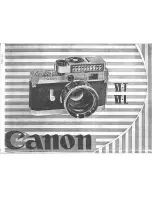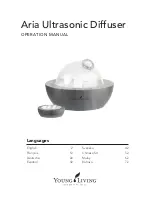
|
26
CRYSTAL® BATTERY USER MANUAL
3.4.1 Minimum and Maximum Temperatures
The best application temperature for Crystal®
Batteries is 15°C (59˚F) to 25°C (77˚F). Every 10°C
(50˚F) additional increase in temperature, means an
additional 13% reduction (vs. 50% on competing
batteries) in cycle life. When the ambient temperature
is at a constant 40°C (104˚F) the battery cycle life
decreases at 23%.
Therefore, the ambient temperature of battery, must
be controlled when it is in use. If the temperature is
too high and is not effectively controlled, the heat
that is built-up to a certain level will damage the
battery. lifetime
Although Crystal® batteries can withstand
operation in extreme temperatures, the battery room/
area should preferably be air-conditioned and/or
properly ventilated to improve the ambient
temperature. The gap in between batteries should not
be less than 6mm, while the float voltage and cycle
charging voltage should be adjusted according to the
requirements listed in this manual.
When charged at the recommended settings we
typically see a temperature variation of 5˚C (41˚F) to
10˚C (50˚F) from ambient. If the batteries temperature
exceeds 20˚C (68˚F) above ambient whilst charging or
discharging you should stop immediately and contact
a Green Rhino office for technical support.
Table 1 Operating temperatures Crystal® batteries.
3.3
PURIFICATION
CHARGING
Green Rhino Crystal® batteries are a very resilient
battery that can operate at wider temperature ranges,
from a partial state of charge and at very low depths
of discharge. Occasionally the battery will require a
purification charge to:
• Redistribute the electrolyte internally within
the battery;
• Recombine the battery;
• Equalize the internal cell voltages;
• Soak the lead (Saturation charge);
• To ultimately recover voltage and capacity.
Purification charging is achieved by the following
process:
1. Use at least half the rated Ah of the battery
irrespective of discharge rate, for example,
running the battery for 30 minutes at 1C, or 60
minutes at 0.5C, or 300 minutes at 0.1C.
2. Recharge the battery using the cycle charge
characteristics and with the correct recharge
current which is 0.25C to 0.35C of the 10-hour
rate for the GRLS, GRGS, GRFT range and 0.15C to
0.25C of the 3-hour rate for the GREV range.
3. Let the battery float for a minimum of 10 hours
for the GRLS, GRGS, GRFT, and the GREV.
Floating and infrequent use of the battery requires
more purification charging than general cyclic use.
Please see Section 3 for the correct purification
charge frequency depending on the application.
3.4
BATTERY LIFE
AND TEMPERATURE
By far one of the most critical aspects of a battery
are the effects of temperature. A battery is a chemical
reactor and in the natural course of charging and
discharging battery heat will be generated.
Additionally, ambient temperature has an effect on a
battery both in terms of its capacity and the way in
which a battery needs to be charged.
Traditional batteries tend to de-rate quickly at higher
temperatures and the reason for this is simple
chemistry. At 50˚C (122˚F) very acidic electrolytes start
to break down. Due to the extremely low levels of acid
(<3%) in Crystal® batteries, our battery can withstand
the heat longer and de-rate at a slower rate than
traditional lead acid batteries. Note: The batteries
cycle life will still be shortened in extreme
temperatures.
-20˚C (-4˚F) to
40˚C (104˚F)
STATUS
DISCHARGE
CHARGE
STORAGE
-40˚C (-40˚F) to
65˚C (149˚F)
15˚C (59˚F) to
25˚C (77˚F)
15˚C (59˚F) to
25˚C (77˚F)
15˚C (59˚F) to
25˚C (77˚F)
-40˚C (-40˚F) to
65˚C (149˚F)
OPERATING
TEMPERATURE
OPTIMUM
OPERATING
TEMPERATURE













































